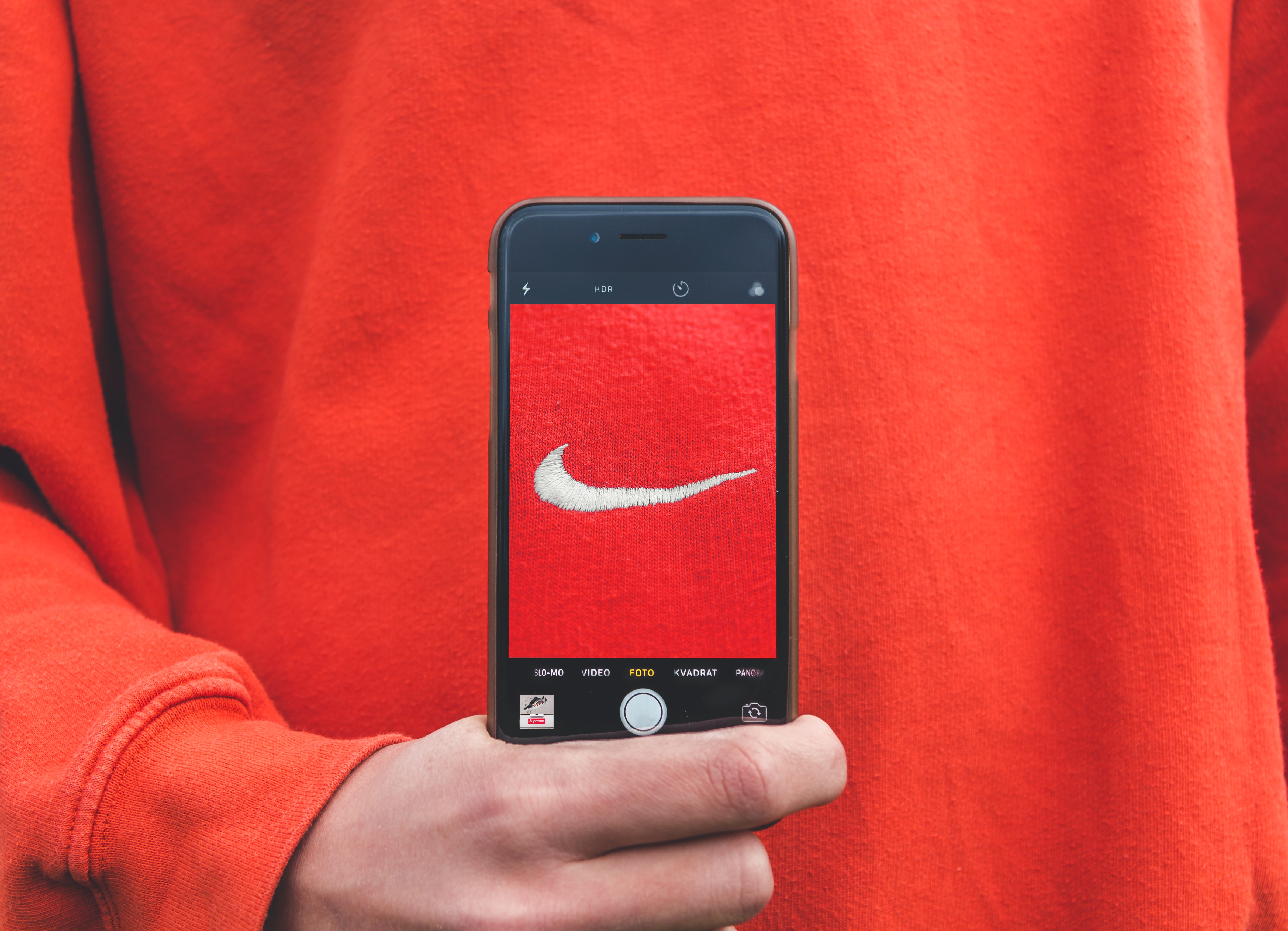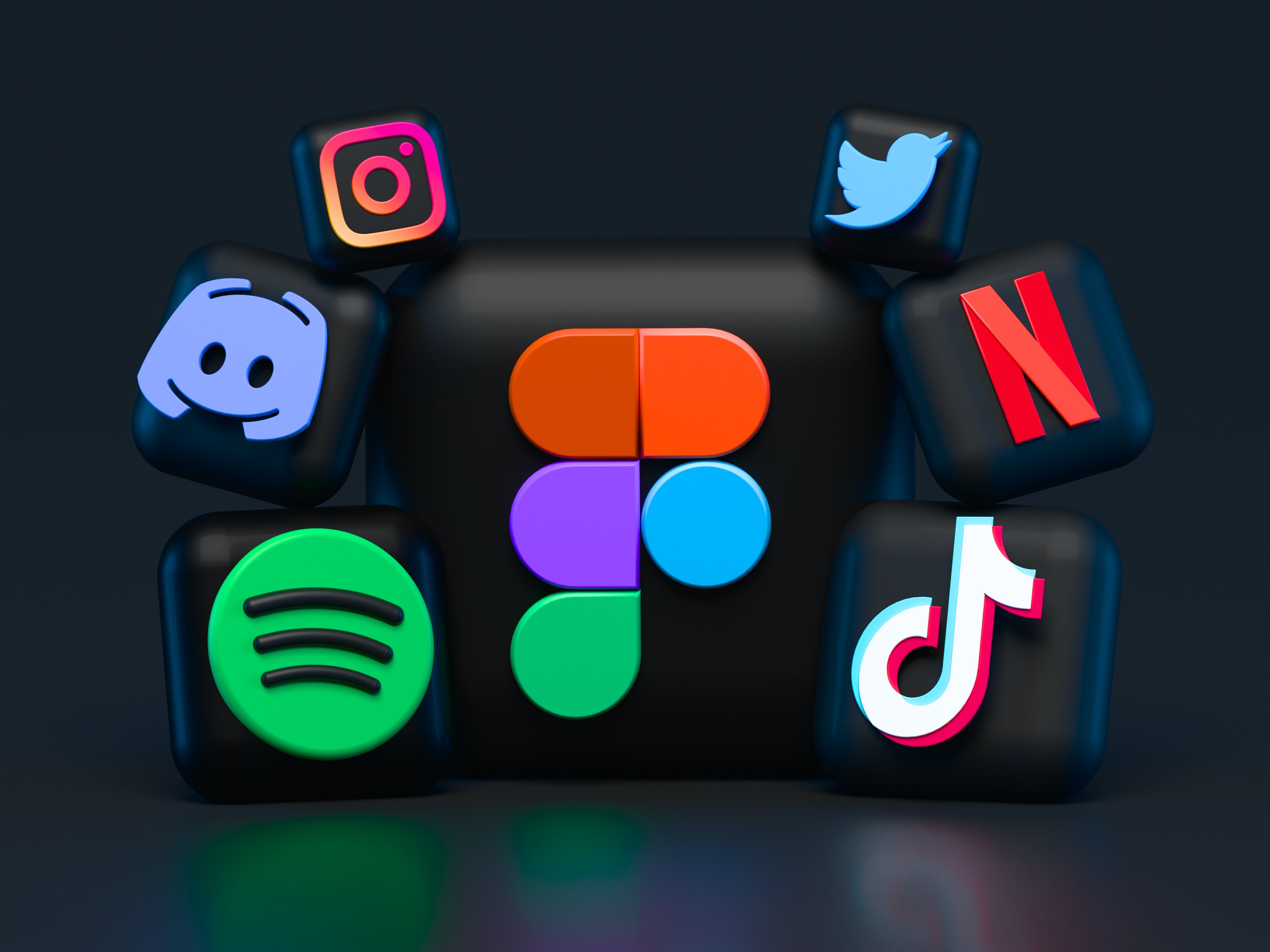We all have that one friend that acts on impulse from time to time: one day, they have different beliefs and values; the other day, they cut their hair short out of nowhere or buy a yellow car. And when we love that friend, we let that behavior slide and still stay by their side, continue to support them, and even sit on the backseat. But what about when a brand acts that way? Can we take real-life examples and apply them to brand image, brand identity, and brand consistency? Today, we will talk about brand image and identity to give you some actionable tips on creating a brand.
The Importance of Brand Consistency
How do we react when a brand has a different profile picture on Facebook and Instagram, different "about us" sections, different messages, and constantly changes their tone of voice? We usually turn to other brands because they sound unreliable, and we are not sure what to expect from them anymore.
But then again, what are effective brands? We could say that they are those brands consisting of a highly interconnected set of business identity attributes, like distinct selling points and core brand values.
According to statistics, 64% of consumers cite shared values as the primary reason they have a relationship with a brand. But any brand can have values and a purpose. Nevertheless, only the consistent ones will be able to communicate them effectively and successfully to their customers.
So, we’ve established that brand consistency is essential. Let’s take a deeper dive into why.
1. Differentiation
With a strong brand, you are able to differentiate your company from the competition. Besides, it helps you stay in the minds of your consumers. You know why? Because it adds a personality to your company and your products/services. And that personality is what makes people relate to your brand.
2. Brand Trust
Brand trust means cementing your company's future in the industry. Establishing a powerful and trusted brand does not happen in a blink of an eye: it takes serious time, effort, and sweat. However, considering that approximately 70% of all customers are likely to spend twice as much on brands which they feel an emotional connection to, and over 80% of clients choose the brands they connect with over everybody else, a strong brand with loyal followers can boost your profits like no other.
3. Brand Loyalty
So, what is brand consistency in your relationship with customers and your company's bottom line? The shortest and most precise brand consistency definition is the pattern of expression that affects what customers think about brands. The end goal for every brand is to build awareness and develop trust and loyalty with their customers. And that is exactly what brand consistency means for your brand.
Brand Image and Brand Identity are the Kings of Brand Consistency

Let's set one thing straight: all of your efforts will be in vain if you miss these two – brand image and brand identity. They are not the same, and you should not mistake one for the other.
What is Brand Image?
Brand image is how the public perceives your brand: the associations consumers make and the thoughts that come to their heads when thinking of your brand. It conveys emotional values and not just a mental image. Brand image is also your organization's character: the accumulation of contact and observation by people outside your company. So we can say that your brand image is the mix of your personality, values, reputation, style, and more.
What is Brand Identity?
With our hair color, clothing style, the way we talk and walk, we create our identity. And just like that, your brand identity is that special ingredient that sets you apart from the rest. It includes all the visual elements that customers see, like your web design, color scheme, slogan, typography and brand logo, social media channels, blog content, visuals, marketing strategies, and more. Brand identity is something you can control, and it influences your brand image.
The Benefits of Consistent Branding
Do you want the hard truth? There are more touchpoints for your brand than ever before. It means that you can only stay competitive by communicating your brand message consistently across all platforms. So whenever and wherever you show up, let it be offline or online, make sure your branding is clear: what's your message, what do you stand for, and what's your business philosophy?
Now, let's cover some of the benefits of consistent branding:
-
It gives your company a unique personality and identity;
-
Differentiates your brand among competitors;
-
Stands out in the minds of your customers;
-
Boosts your authority;
-
Increases customer engagement and loyalty;
-
Positions yourself correctly in your niche;
-
Generates revenue and profits.
Alright, that’s all for the pros and cons. We’re sure that, by now, you want to know how to achieve all of this. Well, here's how!
How to Build Brand Image, Identity, and Consistency Across All Mediums
To build a strong brand image and identity, you need to know your brand, what target market it addresses, and what it stands for, among others. Consider this as the foundational work that will help you find your position on the market and help you win the hearts of your target audiences.
1. Establish Clear Brand Guidelines
The word guideline already sounds strict. And consistency, in some sense, is strict. Most large businesses create their brand style and guidelines that help them ensure all their messaging stays on-point. And those guidelines have to align with the vision and the mission of your company. So, having a brand guideline is where you should start. Take the examples of great brands as another guide. Consider using Frontify for that.
After you finish with the creative process merged with creating a guideline, start planning your content marketing. I say this for a reason: it turns out that 2/3rd of all shoppers use more than one channel to make purchases. And this means that all of your online and offline channels and the messages you send need to align. That's when you'll make an impression that lasts.
At a minimum, your brand guidelines should contain the following elements:
-
Brand Identity Standards - a document describing your entire brand's visual elements: logo, UX-friendly fonts & typography, color palette, branded icons & patterns, brand photography, and more.
-
Brand Messaging Standards - a document consisting of any content-related aspects. Here, we include:
-
the business name,
-
a slogan/tagline or a motto,
-
an elevator pitch (positioning statement or unique value proposition),
-
the brand's story,
-
blog articles, scripts, and copy relevant to your brand's vision, mission, products, etc.,
-
and all the creative processes or steps you implement along the way.
Consider this a blueprint of your branding that you can apply everywhere your business shows up, online or offline, in digital or physical environments, on a screen, or in print.

2. Be Aware Of All the Places You Display Your Brand Image
As we mentioned at the beginning of this guide, your brand image must be consistent on all platforms and environments.
Online & Digital Environments
Aside from just displaying your brand image and identity visuals, you need to make sure you send the same message and encourage the same values for your audiences no matter where they are.
-
Website: perform a website audit at least once a year; check every word and image on your platform to make sure they remain consistent with your brand image, identity, mission, and strategic business goals;
-
Social media: beyond your copy and message, pay attention to your cover photos, profile copy, hashtags and links, profile image, etc.
-
Newsletters & email: when it comes to how people interact and build a relationship with your brand, don't miss any detail - from your newsletter template to your email signature and even email address.
-
Downloadable digital products: if you offer users downloadable content (eBooks, guides, checklists, worksheets, online courses, etc.), make sure all these materials are consistent with your brand guidelines.
-
Digital marketing & advertising: from the shortest press release to the most complex digital advertising materials (image, written content, video, etc.), you need to achieve a consistent brand image and identity without forgetting the smallest detail. Choose the best templates to create high-converting landing pages, keep the logo on all your materials, and develop ready-to-use templates for social media advertising, Google advertising, and so on.
Printed Materials
Most of us indeed moved from the "real world" to the digital one, but it doesn't mean we ultimately gave up on offline marketing, advertising, and brand image & identity creation.
-
Stationery – check if your business cards, letterheads, envelopes, business contract templates, internal & external documentation templates all feature the same brand image elements, logo, color scheme, taglines, fonts, etc.
-
Outdoor advertising – are you using rollups, banners, or other forms of outdoor advertising materials? Regardless of their size and placement, make sure they all feature the crucial elements of your brand image and identity.
-
Informational materials – when you create brochures, product catalogs, posters, books, leaflets, etc., ensure a strong connection and consistency between them and your brand.
-
Packaging – if you want to keep your eCommerce business present in the minds of your customers, make sure your packaging speaks of your brand before the clients get to the products they ordered.
Live Events
Nothing beats a first impression, and that is a fact. However, being present at live events entails more thought and effort when creating and preserving an outstanding brand image. So here are some things you should always keep in mind:
-
Space – even if we mostly organize online events nowadays, the life of live events open to the public has not ended yet. Be it a career fair, an industry convention, a book fair, a product launch, a conference, etc., you still need to care about a consistent brand image and identity. Keep in mind that you have to offer participants a seamless experience through and through with the help of your brand identity document. Be mindful about what people see, hear, smell, and even taste when entering your space (your booth at the convention or the hotel conference room you booked).
-
Branded signage – work with professionals to make wise investments in branded car wraps and stickers, window clings, directional signage, logo signage, product labels, etc.
-
Personal branding – what would company events be without employees and collaborators displaying branded T-shirts or caps or at least wearing the company's colors in a fashionable, subtle form?
3. Choose Your Logo and Design Elements Wisely
You need to use your brand identity visuals consistently: whether in a Facebook post, a title Twitter tweet, a flier you hand out at an important conference, or around restaurants downtown. Did you know that consistently presented brands are 3 to 4 times more likely to experience brand visibility? Well, now you do. Another thing is that your employees should all have access to these files: one thing that is worse than a logo printed out with the wrong colors is using it later.
Let's take McDonald's, for example. Their logo colors, red and yellow, are not just any red and yellow:
-
McDonald’s Yellow: Hex: #ffc300, RGB: 255, 195, 0
-
McDonald’s Red: Hex: #dd1021, RGB: 221, 16, 33
Imagine how customers would feel about the company not keeping those colors the same across all platforms. Well, that would just look wrong.
For this reason, before selecting a logo for your brand, please read this guide on great logo design principles. We also recommend you check out the competition to see how they do things and make sure you test your logo for all possible environments, including phone screens, business cards, social media, and so on.
4. Build a Content Calendar and Stick to It
I am sure you already identified many topics that have nothing to do with your company and brand. However, some might bring high traffic because they are fun and easy, and people love to read those kinds of articles. Therefore, you might feel the temptation to create content that makes money but might not be 100% in line with your brand's mission, vision, story, goals, etc.
Don't fall into the trap of taking the easy route. You'll be paying a greater price later when those blog posts, webinars, or videos ruin your brand image. Instead, stick to your brand's mission and goals and think about the topics you produce. In other words, what you write about has to make sense for your brand and nurture customers' loyalty across all platforms.
5. Keep the Same Tone of Voice on All Mediums
If your brand profile is whimsical on Facebook, it's got to be like that on Instagram, Twitter, and everywhere else. Even offline. With that being said, if you're posting something on LinkedIn, it's got to be less casual and a bit more professional, but still, don't lose your tone of voice. If this doesn't make sense to you, think of it this way: remember yourself at the university talking to your teacher and at a party chatting with your besties. You are still you, but you have all of your different sides.
6. Choose Only What Is Right for Your Brand Image and Reputation
Whenever there is a new platform, channel, or trend where you want to build your presence, ask yourself, "Is that right for my brand?"
Yes, you have to deal with a handful of marketing trends that might work if you implemented them. You have hard choices to make every day, from choosing the best website template for your site, building an online store to expand your business, or adopting the latest customer support trends to increase loyalty.
7. Maintain Brand Consistency on Social Media
You know the giants like Facebook, Twitter, Pinterest, Instagram, TikTok, and others that have taken over the world. With that, each of them has its own specific demographic. And one way or another, your brand needs to have a presence on a couple of those social sites.
But holding your place on different social media channels is not enough: you have to master the art of brand consistency on each, know what works best on Facebook, and don't bring new leads on Instagram. Choose your brand color scheme, tagline, and logo to match each of your social media profiles.
You have to include something more compelling: your viewers need quality content; they need constant reminders about your values and need compelling stories. Besides, don't forget about your company website, newsletters, and more.
Even when you implement user-generated content campaigns, make sure all the users follow your brand guidelines that amount to consistent and relevant brand image and identity. For example, ask them all to use the same agreed hashtags or use your logo. No matter what you do, keep things in check so your brand followers do not accidentally send mixed messages or ruin your brand's reputation somehow.

8. Develop a brandbook and stick to it religiously
If there’s one surefire way to ensure consistent brand image, identity, and voice across all communications, channels, and media, it’s to create a comprehensive brandbook and make sure it’s consulted before creating every piece of content.
Also commonly referred to as a brand guide, this foundational document outlines the key elements and rules for how a brand should be presented and represented across various mediums and channels. It serves as a reference tool for maintaining consistency and coherence in a brand's visual identity, messaging, tone of voice, and overall brand experience.
Creating a brandbook is a complex and lengthy process, but luckily, you don’t have to do everything from scratch. The multitude of available tools (especially the AI-powered ones) can be a great help in getting your brand guidelines started. Our own AI logo maker, for instance, can generate a whole brandbook (logo, typography, color codes, and more) in just a few minutes.
A Short Brand Consistency Checklist to Keep in Mind
Yes, you have to choose a color scheme, create a logo, invest some time in building a fantastic website, have people write relevant and high-quality content, implement a thoughtful marketing plan, and so on. But are you sure you won’t forget anything? Let's see some tips to skim through every time you doubt your brand image and identity!
Brand Visual Identity
-
Tasteful and UX-compliant images, photography, vectors, icons, etc. They should not distract users from the main message you send or interfere with your communication;
-
Brand-consistent, relevant, and appealing branded videos with tasteful logos and frames, soundtracks, subtitles, and voice-overs;
-
Always use imagery from an in-house source collection, your website builder's sources, or stocks that do not infringe any copyright laws.
Brand Content Identity
-
Use active voice instead of the passive one;
-
Always offer practical, helpful, quality, and actionable advice throughout your blog posts, downloadable assets, courses, etc.;
-
Be concise, simple, and direct, but use powerful words meant to trigger a positive emotional response in your customers – we include here everything from blog posts' titles to SEO meta descriptions, audiobooks, podcasts, etc.;
-
Avoid buzzwords in your marketing and advertising materials, as people are tired of them; if you want to build a brand image and identity valuing honesty and integrity, steer clear from buzzwords, inappropriate jargon, clickbait, fake news, exaggerations, borderline lying, and anything that can pass down as untrustworthy;
-
All your written (video & audio) messages, content, products, etc., should focus on your customers and the benefits they have for choosing you over the competition. Tooting your own horn for the sake of tooting is not good branding;
-
No matter what you write (a blog post, a press release, a business card, etc.), make sure all copy is free of grammar mistakes, typos, inaccurate information, unfortunate word associations, fluff, etc.
No matter what you do, online or offline, in digital or physical/live form, make sure every color nuance, every logo pixel, and every punctuation mark express clearly and transparently your brand's mission, vision, values, promises, and personality traits.
Last but not least, if you don't have a website yet to use as a foundation for your brand image and identity, fix that loop by creating one ASAP!

